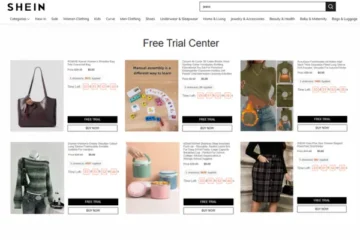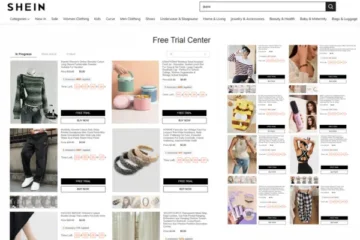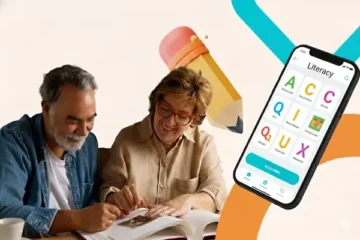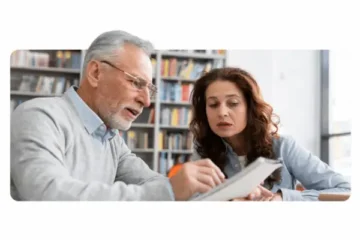Mixed Reality in Education: Transforming Learning Environments for Engaging Experiences
Mixed Reality in Education: Transforming Learning Environments for Engaging Experiences
Mixed reality is changing how students learn by combining real and virtual environments. This innovative approach allows learners to interact with digital content in ways that were not possible before. Mixed reality in education enhances engagement, improves understanding, and prepares students for a technology-driven world.
Advertising
In classrooms, mixed reality can transform traditional lessons into exciting experiences. Students can explore historical events or geographical landscapes through immersive simulations. This hands-on approach not only makes learning fun but also helps solidify important concepts.
Educators are increasingly using mixed reality tools to create personalized learning experiences. These tools cater to different learning styles and allow students to learn at their own pace. As this technology evolves, its potential to revolutionize education continues to grow, making it an exciting topic to explore.
The Emergence of Mixed Reality
Mixed reality (MR) is reshaping how learning occurs by blending digital content with the physical world. This new approach allows educators to create more engaging and interactive environments, enhancing student experience and understanding.
Definition and Scope
Mixed reality combines virtual and augmented reality technologies to create interactive environments. In MR, digital objects are not only added to the real world but can also interact with it.
Key aspects include:
- Real-Time Interaction: Users can engage with both physical and digital elements simultaneously.
- Authentic Learning: MR allows learners to experience complex concepts in real-world settings.
- Inclusive Learning: It supports various learning styles, catering to visual, auditory, and kinesthetic learners.
This flexibility opens up numerous opportunities in education, from virtual field trips to simulations of historical events and scientific experiments.
History and Evolution
The concept of mixed reality has evolved significantly over the years. Early developments began in the 1990s with research on augmented reality. Researchers examined how digital images could overlay the physical world.
With advancements in technology, such as smartphones and wearable devices, MR began to take shape. Programs for education started to utilize MR more in the 2000s.
For instance:
- 2000s: Increased use of mobile devices for educational games and applications.
- 2010s: Growth in classroom tools that incorporate MR, like interactive apps and simulations.
Today, MR is becoming mainstream, with schools and universities regularly adopting these technologies to enhance learning experiences.
Technical Foundations of Mixed Reality
Mixed reality relies on various technical elements to create immersive learning experiences. These components include hardware, software, and interaction methods that make virtual and physical environments blend smoothly.
Hardware Components
Hardware is essential for enabling mixed reality experiences. Key components include:
- Head-Mounted Displays (HMDs): These devices, like the Microsoft HoloLens or Oculus Quest, allow users to see both virtual and real-world elements. They are crucial for immersion.
- Sensors and Cameras: Devices such as depth sensors or cameras track user movement and surroundings. This information helps create an accurate mixed reality environment.
- Computational Devices: Powerful computers or mobile devices run the software needed for mixed reality. The performance of these devices affects the quality of the experience.
Each of these hardware elements contributes to how effectively mixed reality can be integrated into educational settings.
Software Frameworks
Software frameworks play a significant role in developing mixed reality applications. They provide the tools and libraries needed for building immersive experiences. Some important frameworks include:
- Unity: A popular game engine that supports 3D graphics and allows developers to create interactive environments.
- Vuforia: This framework specializes in augmented reality applications. It helps detect and track images and objects in real time.
- ARKit and ARCore: Both are mobile frameworks for iOS and Android, respectively. They enable developers to integrate augmented reality into apps easily.
Using these frameworks, developers can focus on creating engaging content rather than getting bogged down by technical details.
Interaction Techniques
Interaction techniques determine how users engage with mixed reality environments. These methods enhance the learning experience by making it more interactive. Key techniques include:
- Gestural Interaction: Users can manipulate virtual objects using hand movements, allowing for natural interactions.
- Voice Commands: Voice recognition enables users to control applications hands-free. This method can be beneficial in educational settings for tasks like navigation or requesting information.
- Touch Interfaces: Touch screens or compatible devices allow users to interact with virtual content directly. This makes it easier for learners to engage with the material.
Understanding these interaction techniques helps create a more effective learning environment.
Pedagogical Approaches in Mixed Reality
Mixed reality in education offers new ways to engage students and enhance their learning experiences. Key approaches, like constructivist learning theory and collaborative learning, play a significant role in how this technology is used in classrooms.
Constructivist Learning Theory
Constructivist learning theory emphasizes that students build knowledge through experiences. In mixed reality, this approach allows students to interact with virtual objects and environments.
For example, students can manipulate 3D models in a virtual lab. This hands-on experience helps deepen their understanding. Mixed reality also allows learners to explore complex concepts visually, which makes learning more engaging.
Teachers can design experiences where students face real-world challenges. This encourages critical thinking and problem-solving skills. By actively participating in their learning, students take ownership of their education.
Collaborative Learning
Collaborative learning focuses on group work and interaction among students. Mixed reality can enhance this by enabling students to work together in shared virtual spaces.
In these environments, they can solve problems or complete tasks as a team. For instance, students might collaborate on a science experiment set in a mixed reality lab. This promotes communication and teamwork skills.
Mixed reality also allows for real-time feedback and discussion. Students can see each other’s actions and decisions, which encourages dialogue about their learning process. Together, they can explore diverse perspectives and develop a deeper understanding of the subject matter.
Mixed Reality Applications in Education
Mixed reality (MR) brings unique opportunities to various educational fields. It enhances understanding through interactive experiences, making learning more engaging and practical. Here are some key applications in different areas:
Science and Mathematics
Mixed reality offers a hands-on approach to complex scientific concepts. Students can explore 3D models of molecules, allowing them to visualize and interact with structures at a molecular level. For example, MR can simulate chemical reactions where students manipulate virtual elements.
In mathematics, geometry lessons can incorporate MR to visualize shapes and theorems in real-time. This helps students grasp spatial relationships better. Programs can transform classroom projects into immersive experiences, letting students experiment with mathematical principles actively.
Arts and Humanities
In arts education, mixed reality can immerse students in historical contexts. They can explore ancient civilizations or famous artworks as if they were present. This method enhances understanding and appreciation of cultural heritage.
Furthermore, MR applications can encourage creative expression by allowing students to create digital art in a 3D space. They can also collaborate with peers virtually, enhancing teamwork skills and artistic feedback. By blending the physical and digital worlds, students develop a more comprehensive view of arts and humanities.
Vocational Training
Mixed reality is particularly valuable in vocational training, where hands-on skills are essential. For instance, automotive students can practice repairs on virtual vehicles before working on real ones. This reduces risks and increases confidence.
In healthcare training, MR can simulate patient interactions, providing a safe space for practice. Students learn to handle various scenarios, improving their decision-making skills. Additionally, MR can aid in teaching technical skills, such as electrical or woodworking, by allowing students to visualize complex tasks before performing them.
Each of these fields benefits significantly from mixed reality, enhancing both engagement and effectiveness in learning.
Benefits of Mixed Reality in Learning
Mixed Reality (MR) in education offers unique advantages that enhance the learning experience. It creates engaging environments, improves understanding, and helps students apply skills in real-world situations. The benefits are evident in various areas of learning.
Enhanced Engagement and Motivation
Mixed Reality can capture students’ attention more effectively than traditional methods. By using virtual and augmented elements, it immerses students in interactive lessons.
- Interactive Experiences: Students engage actively with content, making learning feel like an adventure.
- Variety of Activities: MR allows for diverse learning activities, from simulations to virtual field trips.
This immersion can lead to increased motivation and a positive attitude toward learning. When students are excited, they are more likely to participate and perform well in their studies.
Improved Retention and Comprehension
Research shows that students retain information better when they learn through mixed reality. The interactive features help clarify complex topics.
- Visual Learning: MR transforms information into visual representations. This makes abstract concepts easier to understand.
- Active Participation: When students interact with lessons, they create lasting memories.
By connecting theory with practice, students are more likely to comprehend and remember what they learn. This can lead to higher academic achievement.
Real-World Skill Transfer
Mixed Reality prepares students for real-life situations and professions. It allows them to practice skills in a safe environment before facing real challenges.
- Simulated Environments: Students can engage in realistic simulations. For example, medical students can practice procedures without risk.
- Critical Thinking: MR encourages problem-solving in dynamic situations.
This ability to transfer skills from the classroom to real life is invaluable. It builds confidence and readiness for future careers, making students more competitive in the job market.
Challenges and Limitations
Mixed reality (MR) in education presents exciting opportunities, but it also has several challenges. Understanding these limitations is essential for improving the integration of MR in learning environments. Key obstacles include technological barriers, issues of accessibility and equity, and privacy concerns.
Technological Barriers
Technological issues can hinder the effectiveness of mixed reality in education. Many schools may lack the necessary devices or internet connectivity.
- Device Compatibility: Not all MR applications work with every device, which can limit use in classrooms.
- Maintenance: Regular updates and maintenance are needed to keep technology functioning properly.
- Training: Teachers and students require training to use MR tools effectively. Without proper training, they may struggle and feel frustrated.
These barriers can slow down the adoption of MR strategies in schools, impacting overall learning experiences.
Accessibility and Equity
Accessibility and equity are crucial in ensuring that all students benefit from mixed reality. Not every student has the same opportunities to engage with MR tools.
- Resource Disparities: Some schools may not afford the latest MR technology, leading to unequal learning experiences.
- Special Needs: MR applications must consider students with disabilities. Not all tools are designed with their needs in mind.
- Digital Literacy: Varied levels of digital literacy among students can affect how well they engage with MR content.
Addressing these issues is vital for creating inclusive educational spaces.
Privacy and Ethical Considerations
Using MR tools raises important privacy and ethical questions. Schools must be cautious about how student data is collected and used.
- Data Collection: MR applications often gather personal data, raising privacy concerns.
- Consent: Students and parents need to understand how their data is used, necessitating clear communication from schools.
- Content Safety: Ensuring that the content accessed through MR is age-appropriate is essential for protecting students.
These considerations play a significant role in how schools implement mixed reality technologies, shaping students’ trust and willingness to engage.
Future Directions for Mixed Reality in Education
Mixed reality (MR) is set to change education in exciting ways. New technologies and trends are emerging, shaping how students learn. Additionally, integrating MR with other educational tools can enhance learning experiences for all.
Emerging Technologies and Trends
New technologies are essential for the growth of mixed reality in education. This includes advances in virtual reality (VR), augmented reality (AR), and artificial intelligence (AI). These technologies can provide immersive experiences that engage students better than traditional methods.
Key Trends:
- Personalized Learning: Students can learn at their own pace with tailored experiences.
- Collaborative Spaces: MR allows students to work together from different locations.
- Enhanced Engagement: Interactive lessons can make difficult subjects more interesting.
Schools should keep an eye on these trends. They have the potential to reshape teaching methods and improve outcomes for students.
Integration with Other Educational Innovations
Combining mixed reality with other educational tools offers great potential. For instance, integrating MR with platforms like Learning Management Systems (LMS) can streamline content delivery.
Benefits of Integration:
- Data Analytics: Teachers can track student progress and adapt lessons accordingly.
- Cross-Disciplinary Learning: MR can allow for lessons that blend multiple subjects, making connections clearer.
- Access to Resources: Students can explore global locations or historical events without leaving the classroom.
This integration provides a richer learning experience. It prepares students for a more interconnected world.
Case Study: Microsoft’s HoloLens in Medical Education
Background
Microsoft’s HoloLens, a leading mixed reality (MR) device, has been transforming medical education by providing immersive and interactive learning experiences. Medical schools and institutions worldwide have begun to integrate HoloLens into their curricula to enhance the way future doctors and medical professionals are trained.
Implementation
Using HoloLens, students can visualize complex anatomical structures in 3D, interact with virtual patients, and simulate surgeries in a risk-free environment. The device overlays digital content onto the physical world, allowing students to engage with lifelike simulations and real-time collaboration with instructors, regardless of location.
Impact
The introduction of HoloLens has revolutionized the traditional learning model in medical education. Students now have the ability to gain hands-on experience without the need for cadavers or live patients, leading to deeper understanding and retention of complex medical concepts. This technology also enables remote learning, making high-quality medical education more accessible.
Lessons Learned
- Enhanced Engagement: MR technologies like HoloLens increase student engagement by making learning interactive and immersive.
- Practical Application: Mixed reality allows students to practice and refine their skills in a controlled, virtual environment, bridging the gap between theory and real-world application.
- Global Accessibility: By enabling remote, interactive learning, MR broadens access to quality education, particularly in underserved regions.
Conclusion
Microsoft’s HoloLens demonstrates the profound impact that mixed reality can have on educational outcomes. Its application in medical education serves as a powerful example of how technology can transform traditional learning environments into dynamic and engaging experiences.
More Case Studies and Success Stories
Mixed reality (MR) is changing education in exciting ways. Many schools and organizations are using MR to create unique learning experiences.
1. Geography and History Learning
A recent study combined MR with tangible interfaces and robotics. Students engaged in hands-on activities that made learning more interactive. This environment helped improve understanding of complex subjects.
2. Science Exhibits in Museums
Museums are using MR to transform traditional exhibits. Intelligent displays allow students to interact with scientific concepts. They can explore topics in a fun and engaging way, making learning memorable.
3. Classroom Environments
In several classrooms, MR technologies have redefined teaching. Teachers create immersive lessons that allow for exploration beyond textbooks. Students experience lessons in 3D, which enhances engagement and retention.
4. Enhanced Learning Tools
Some schools have integrated VR and MR into everyday lessons. For instance, students can simulate historical events or scientific experiments. This method encourages active participation and critical thinking.
These success stories show how mixed reality can create effective learning environments. With creative applications, MR can help students grasp challenging concepts and enjoy their education.





